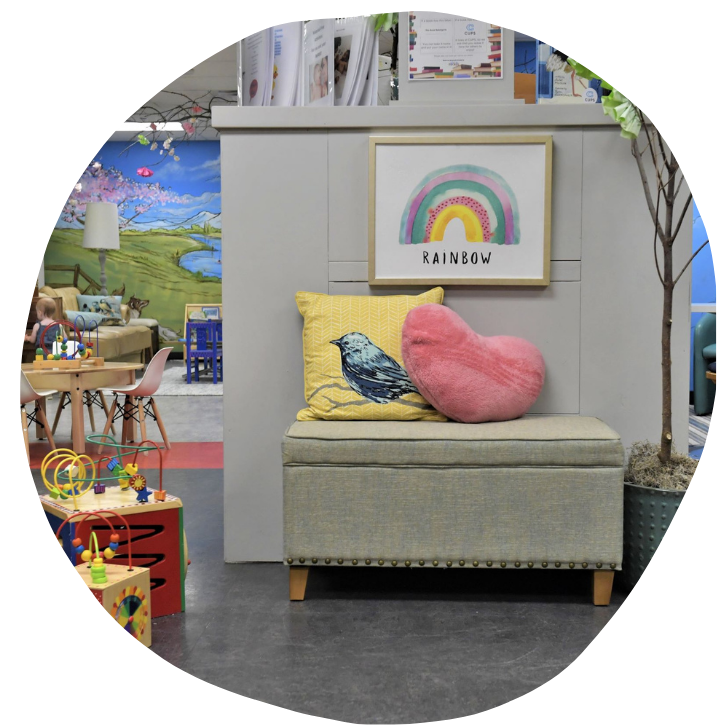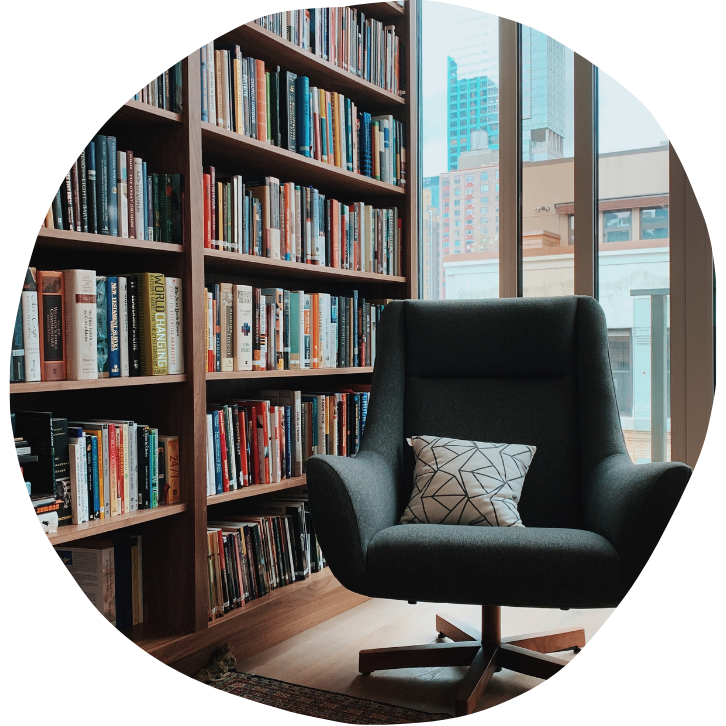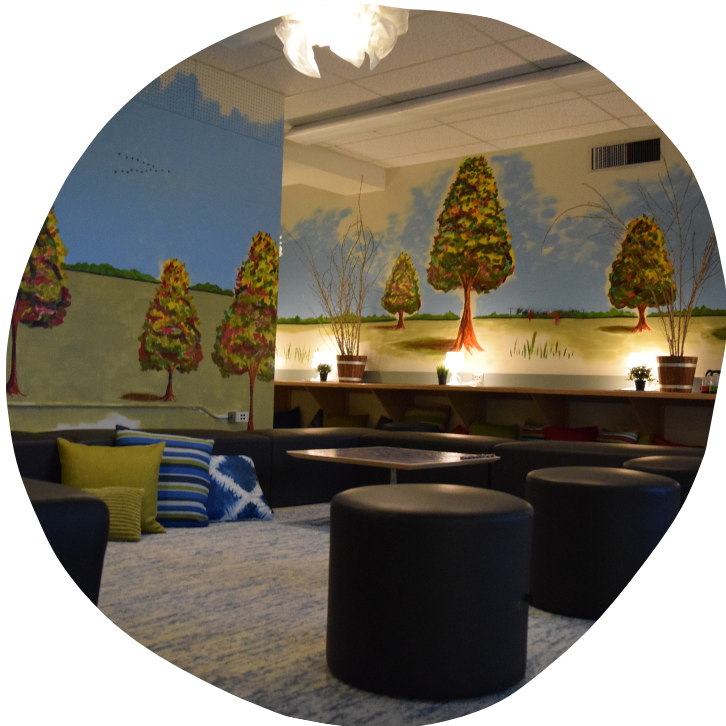

How can you make a reading place in your community, school or business?
How is a reading place different from a library or a learning commons?
A library is a place that holds a collection of books and other learning materials for people to read, borrow, and reference. Libraries can be great spaces for community connection, they focus on the circulation of reading materials, and often offer support services to the community.
A learning commons is a place dedicated to learning, studying, and collaborating with others, or on their own. These spaces are often intended to have visitors work with one another, and get people involved in the space using shared tables and computer technology.
A reading place has elements of both a library and a learning commons, but above all is a place that cherishes reading by creating unique places that inspire, and create a sense of wonder for children and adults alike!
Building a Reading Place


Reading places aren’t just for kids! They’re places that inspire all forms of readers from corporate employees, to grandmothers, to public school principals. They’re spaces to sit down, pick up a good book, and become inspired by stories, ideas, and new ways of thinking.
A reading place can be as small as a child cuddling under their bedsheets with a flashlight, or as large as an entire building! They can be made in an existing business or school, or could occupy a whole new building of its own.
If you want to learn more about how reading places fit into businesses, schools, and communities tune in to our podcast(s) that talk about the different types of reading places.


Reading in the City Podcast: The Little Red Reading House
Listen in while John Lewis of Intelligent Futures sits down with Steacy Pinney, reading place designer and former CEO of Calgary Reads, Grant from CUPS and Jackie from Chevron Canada to talk about reading—why it’s important and how we can create inspiring and unique places for people to read.


Reading in the City Podcast: Reading Places for Children
Reading has such a huge impact on our lives. It opens doors for critical thinking, problem solving and communication. That’s why reading place designer Steacy Pinney is such an advocate for reading places. Listen in while she discusses the concept behind a reading place and tips to create places that are interesting, comfortable and inviting so that people are excited to read.
“The child has a different relation to his environment from ours. Adults admire their environment; they can remember it and think about it; but the child absorbs it.”
-Dr. Maria Montessori
Create a reading place…


In the community
Great community spaces bring people of all different walks of life together, and one great way to do that is through reading. Reading in public improves our societies, democracies, economies, and innovations by creating a shared experience that inspires empathy and idea generation in new environments.
Download a 2-page PDF to learn more on why and how to implement a reading place in your community or organization.


In your business
Did you know that a 1% rise in literacy rates would ultimately lead to a 3% rise in GDP, or $54 billion per year, every year, and a 5% increase in productivity? Did you also know that employees who read regularly have a larger vocabulary, better communications skills, improved general knowledge, more creativity, and an easier time understanding abstract concepts,?
Creating a reading place for employees to read at work not only creates better employees by engaging them to read, it also attracts talented workers through unique placemaking, and acts as an idea generator, as they read about new and exciting ideas.
Download a 2-page PDF to learn more on why and how to implement a reading place in your business.


In your school
Calgary Reads originally ran through school partnerships as a way to revamp the reading experience to bring back the care and coziness that entices children to read. Having an inviting and safe space to read is fundamental to a child’s development, as children react farmore to their environments than an adult would.
As Maria Montessori once said, “The child has a different relation to his environment from ours. Adults admire their environment; they can remember it and think about it; but the child absorbs it.”
Download a 2-page PDF to learn more on why and how to implement a reading place in your school.
Learn More & Build Your Own Reading Space
Want to learn more about building a reading place for your community, school, or business? Contact the Little Red Reading House at hello@littleredreading.house for a free 30 minute consultation!
Why are reading places important?
Discover the importance of creating reading spaces in homes, communities, schools and businesses.
Reading spaces at home
Read our step-by-step guide on creating a reading space in your own home.